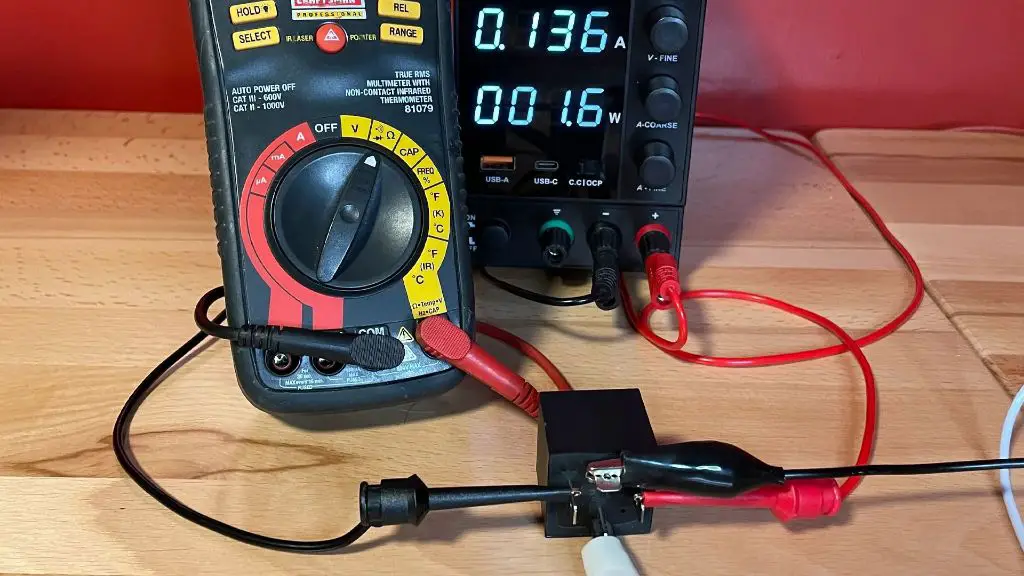What Happens When A Power Relay Fails?
A power relay is an electromechanical switching device used in power management for electric circuits. It consists of an electromagnet and a set of contacts that are controlled by the electromagnet to open or close electrical connections. The purpose of a power relay in a circuit is to provide reliable on/off switching of high-current electrical loads, provide electrical isolation between control and load circuits, and protect equipment from overloads or faults.
Power relays play a critical role in electrical systems by facilitating control functions, ensuring safe operation, and protecting circuits and equipment from damage in the event of issues like short circuits or spikes in current draw. They allow a low-power circuit to switch a higher power circuit while keeping them isolated. This makes power relays indispensable components in a wide range of applications including motor controls, automation systems, vehicles, power supplies, and industrial equipment.
Symptoms of Failure
When a power relay begins to fail or goes bad, some common symptoms may arise. One potential symptom is a loss of power to certain components and systems in the vehicle that the relay controls. This could manifest as things like headlights or interior lights flickering or cutting out completely. Intermittent power issues can also occur if the relay is making partial contact (Carparts.com, 2024).
Another possible symptom is overheating of the relay itself. As the contacts degrade and resistance increases, more current may be drawn through the relay resulting in excessive heat generation. This heat can damage the plastic casing of the relay as well as other nearby components (Punchng.com, 2019). The relay may emit a burning smell or even melt if overheating is severe. This excessive heat may also lead to the contacts welding themselves together resulting in permanent failure.
Overall, any intermittent electrical issues, flickering lights, components cutting in and out, no starts, or detecting an overheated relay or burning smell can indicate potential failure of the power relay. Having these symptoms investigated and the relay tested or replaced can help avoid being stranded when the relay eventually does fail completely.
Causes of Failure
There are several common causes of power relay failure:
Mechanical Wear
Over time, the moving parts in a mechanical relay can wear out. The repeated mechanical stress causes contact arcing, which erodes the contacts until they no longer make a good connection (https://automationcommunity.com/most-common-relay-failure-reasons/). This wear is accelerated if the relay is frequently cycled on and off.
Contact Corrosion
Corrosion buildup on the contacts interferes with the electrical connection, increasing contact resistance. This can happen if the contacts are exposed to moisture, certain chemicals, or gases (https://control.com/technical-articles/How-to-Troubleshoot-Mechanical-Relays/). Proper sealing is required to prevent contact corrosion.
Coil Failure
The electromagnet coil is essential for operating the relay. Coil failure is often caused by overheating from excess current, an electrical spike, or prolonged operation at high ambient temperatures.
Overvoltage
A voltage spike on the coil or contacts can burn or pit the contacts, damage insulation, or cause internal short circuits. Adding surge protection can prevent overvoltage relay failure.
Effects on the Circuit
When a power relay fails, it stops supplying power to the components that rely on it to function. This leads to a loss of power and functionality for those components.
Some of the key components that may lose power due to a failed power relay include:
- Control units like PLCs, motor starters, and VFDs
- Sensors and instrumentation
- Actuators like motors, solenoids, and lights
- Safety components like emergency stop switches
The loss of power to these components leads to a range of performance and operational impacts on the system. PLCs and control units will be unable to run their logic and control sequences. Motors and actuators will fail to start up or operate. Sensors will be unable to provide feedback on process conditions. Safety components will be non-functional.

All of this leads to complete process downtime, production halts, and potentially even hazardous conditions if safety components are disabled when power is lost. Proper troubleshooting and quick replacement of the failed relay is crucial to get the system functioning again.
Troubleshooting
There are a few key steps to troubleshoot a faulty relay and diagnose the root cause of failure.
First, inspect the relay contacts to check for signs of pitting, corrosion or burning which can prevent proper continuity. Bad contacts are one of the most common reasons for relay failure.
Next, use a multimeter to test the coil resistance. Each relay coil has a specific resistance value. If the measured value deviates significantly from the specification, it indicates a problem with the coil such as an open or short circuit.
It’s also important to measure the control circuit voltage going to the relay coil. An improper voltage due to a wiring issue can prevent the relay from energizing properly. Refer to the relay specifications for the correct control voltage.
Additionally, check the load circuit voltage when the relay contacts are closed. An abnormal reading could signify welded or stuck contacts. Probing the voltages at each point in the relay circuit helps isolate the faulty component.
For reference, see this helpful guide on troubleshooting relays from Automation Community: https://automationcommunity.com/how-to-troubleshoot-a-relay/
Preventative Maintenance
Preventative maintenance is crucial for power relays to ensure continuous and reliable operation. As relays age, several maintenance tasks should be performed regularly according to manufacturer specifications.
Contact cleaning involves using contact burnishing tools or sandpaper to remove any oxidation or contamination on the relay contacts. This reduces contact resistance which can impede operation. Coil inspection involves checking the coil for signs of overheating or damaged insulation which can lead to failure. Old or damaged coils should be replaced.
Old electromechanical relays, especially those made before the 1970s containing materials like cadmium, should be replaced with modern solid state or microprocessor-based relays for improved speed, accuracy, and reliability. Newer relays are also smaller and use less power. According to E-585 Protective Relays Maintenance Fundamentals, replacing old relays avoids potential failures and prevents downtime.
Following routine preventative maintenance procedures for power relays extends their service life and prevents untimely failures leading to dangerous shutdowns.
Repair and Replacement
There are two main options when a power relay fails – repairing it or replacing it entirely. The decision between repairing or replacing depends on the extent of the damage and accessibility of the relay.
Repair may involve cleaning the contacts or replacing the coil. Contacts can often be cleaned with electrical contact cleaner spray. This can remove contamination and restore connectivity. However, pitted or severely corroded contacts may need to be sanded or filed down. If the damage is too extensive, the contacts will need to be replaced.
Replacing the coil is necessary if the coil has shorted or opened. Matching the specifications precisely is crucial, including coil resistance, coil voltage, and contact arrangement. Refer to the relay datasheet or labeling for correct specifications.
If the relay case itself is damaged or inaccessible for repair, complete replacement may be necessary. An equivalent replacement relay that meets the circuit requirements should be sourced. Refer to manufacturer specs and relay markings to aid replacement.
When repairing or replacing relays, safety precautions should be taken, including de-energizing the circuit, using insulated tools, and verifying isolation.
According to this source, cleaning or replacing contacts is often the most feasible repair option before resorting to full unit replacement.
Safety Precautions
When troubleshooting or replacing a failed power relay, it’s crucial to follow safety precautions to avoid electrocution, burns, and arc flashes. The most important precaution is to de-energize the circuit by turning off power at the breaker or disconnect switch and verifying it’s de-energized before working on the relay or connected wiring. Wear proper PPE including electrical gloves, face shield, and flame resistant clothing. Avoid loose clothing and jewelry which could get caught in moving parts. Use insulated tools and properly rated test equipment. Follow lockout/tagout procedures to prevent accidental re-energization. Double check wires are de-energized before disconnecting as arcing could occur. Work cautiously to avoid drops, impacts, or excessive vibration which could cause arcing. Have a fire extinguisher nearby. Follow all electrical codes and manufacturer’s instructions.
According to Safety Relays – RS Components, de-energizing the circuit and proper PPE are critical for safely troubleshooting relay failures.
Diagnosing Root Cause
Identifying the root cause of a relay failure can help prevent future issues from occurring. Some key factors that commonly contribute to relay failures include:
Environmental factors like heat, cold, moisture, or contamination can impact relay operation over time. Excessive temperatures or humidity levels accelerate component degradation. Dust, dirt, oil, or other contaminants may interfere with relay contacts and sensitive electromechanical components.
The age and usage of the relay will also contribute to wear and failure rates. Relays have a limited lifespan and will eventually fail through normal use. Older relays that have been in service for many years have a higher likelihood of failure.
Improper relay settings or sizing can lead to premature failure. If a relay is consistently operating outside of its rated voltage or current specifications, the contacts and coil will wear out faster. Overloading a relay beyond its design capabilities is a recipe for early failure.
Thorough inspection, testing, and analysis of a failed relay can reveal if such factors played a role. The key is to not just replace the faulty component, but to understand why it failed in the first place.
Conclusion
In summary, power relays are a critical component in many electrical circuits and systems. When they fail, it can lead to a range of problems from minor glitches to complete system failures. Understanding what causes relays to fail and how to properly diagnose and address these failures is important for both designing and maintaining robust systems.
Preventative maintenance and testing can catch many issues before they become outright failures. When failures do occur, careful troubleshooting and root cause analysis is key. Replacing failed components must be done with care to avoid damage or safety risks. While power relay failures can be disruptive and problematic, being prepared with knowledge of their modes of failure, effects, and troubleshooting techniques can allow engineers and technicians to efficiently resolve these issues and get systems up and running again.
The role of the power relay may at times be overlooked, but as we have seen, these devices are integral to safe and reliable circuit performance in many applications. Understanding power relay failure modes, prevention, and remediation provides invaluable insight for both the designers and operators of electrical systems and equipment.




